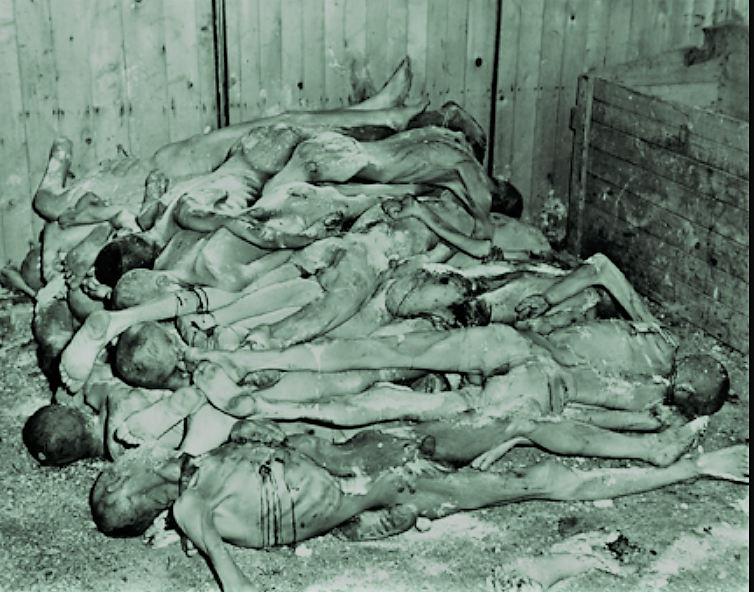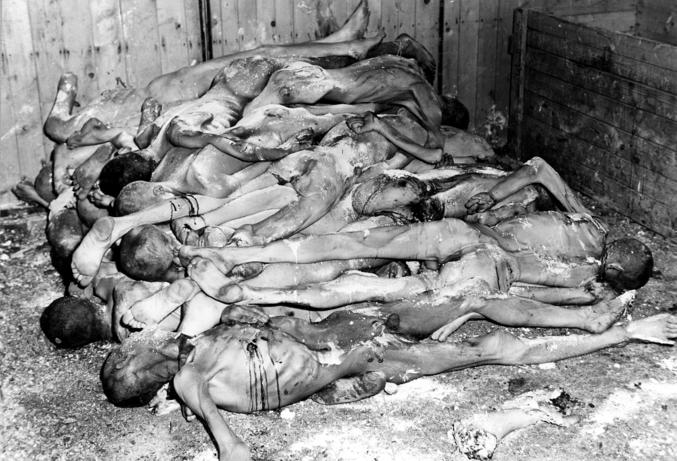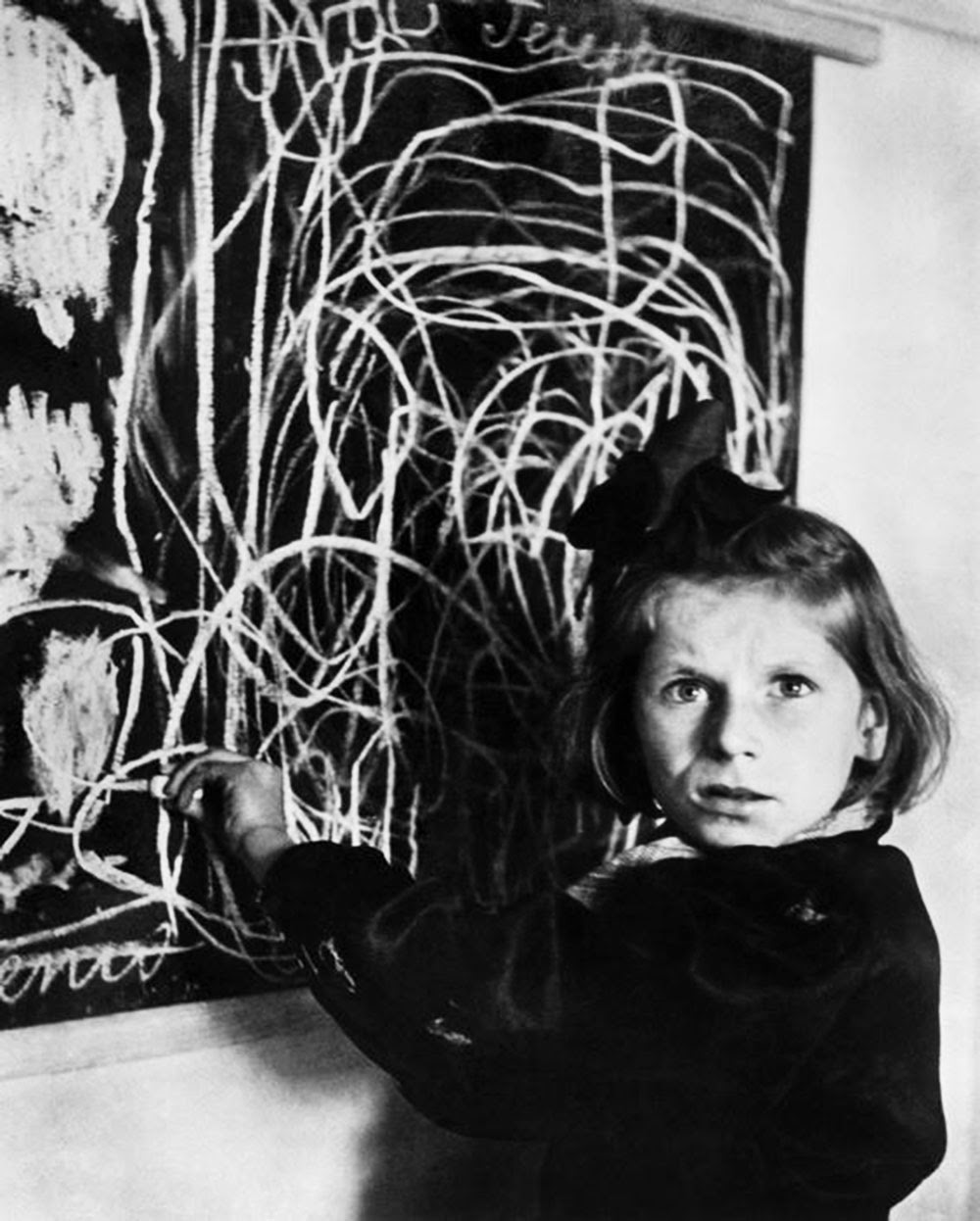***********************WARNING GRAPHIC CONTENT***********************

This will be the most horrific post I have done on the Holocaust. Generally, I try to avoid graphic images because they make me feel uncomfortable.
However, there is nothing comfortable about the Holocaust, and it should make us feel uneasy. There were millions murdered in the most gruesome way possible. I can’t even say imaginable, because I still can’t imagine it. Even those who survived suffered for years to come, sometimes until they died, at times decades later.
The photograph above is of the bodies of women and children found during the liberation of Auschwitz.
“My memories from there have stayed with me all my life,” said Aleksander Vorontsov, who was part of a film crew that captured some of the horror the troops found at Auschwitz, remembered. “All of that was the most moving and horrific thing that I filmed during the war.”

A young man sits on an overturned stool next to a burnt body inside the Thekla concentration sub-camp outside Leipzig, Germany, shortly after its liberation by U.S. Forces in April 1945.

Many of those who had managed to survive Auschwitz were gravely ill. The Nazis left Them behind to die.

German doctor Fritz Klein stands amid the corpses of prisoners in one of the mass graves at the Bergen-Belsen Concentration Camp soon after its liberation by British troops in April 1945.

After the liberation of Auschwitz, Ivan Dudnik, a 15-year-old Russian boy, was rescued. He was captured and sent to the camp by the Nazis, and he went insane from the horrors he witnessed there.

A pile of human bones and skulls lies on the grounds of the Majdanek concentration camp soon after its liberation by Soviet troops in 1944.

A female survivor after the liberation of Auschwitz

A starving child lying on the street of the Warsaw ghetto, as photographed by a sergeant in the Wehrmacht, circa 1941.

A Polish supervisor logs in the Polish dead as a pile of bodies lies atop a wheelbarrow. 1942. Warsaw ghetto.

12 April 1945—Bodies of prisoners of Ohrdruf stacked like cord-wood

Bogumila Jasuik, one of the “Ravensbruck Rabbits” chosen for medical experimentation. “German doctors experimented on her twice in November and December 1942, making four cuts on the muscles of her thigh.” (United States Holocaust Memorial Museum).
What amazes me more than anything else is that there is so much evidence, yet there are so many who still deny the Holocaust ever happened.
Sources
https://www.eisenhowerlibrary.gov/research/photographs/world-war-ii-holocaust-images
https://allthatsinteresting.com/warsaw-ghetto#22
https://allthatsinteresting.com/liberation-of-auschwitz#34
















 .
.


You must be logged in to post a comment.